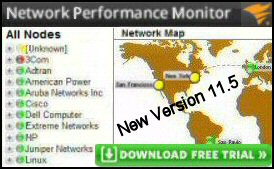How PowerShell Interacts with Outlook
The purpose of this page is to employ PowerShell to GetNameSpace("MAPI"), and thus make it possible to interact with Microsoft's Outlook client.
PowerShell with Outlook
- Planning: PowerShell Interrogates Outlook
- List Senders' Addresses
- Instructions: Creating a PowerShell Function
- Ideas for Analyzing Outlook Emails
- Another Example Reading Email Subjects
♣
Planning: PowerShell Interrogates Outlook
Stage 1: We create a new ComObject
New-Object -ComObject Outlook.Application
Next, we set the namespace
$Namespace = $Outlook.GetNameSpace("MAPI")
$NameSpace.Folders.Item(1)
Stage 2: We will retrieve information about the actual messages.
Stage 1: PowerShell Lists Outlook's Folders
Clear-host
Add-Type -Assembly "Microsoft.Office.Interop.Outlook"
$Outlook = New-Object -ComObject Outlook.Application
$Namespace = $Outlook.GetNameSpace("MAPI")
$NameSpace.Folders.Item(1).Folders | FT FolderPath
Stage 2: List Senders' Addresses Stored in Outlook's Inbox
This script connect to the logged on user's Outlook Inbox, then enumerates the email addresses of each message's sender.
Clear-Host
$Folder = "InBox"
Add-Type -Assembly "Microsoft.Office.Interop.Outlook"
$Outlook = New-Object -ComObject Outlook.Application
$Namespace = $Outlook.GetNameSpace("MAPI")
$NameSpace.Folders.Item(1)
$Email = $NameSpace.Folders.Item(1).Folders.Item($Folder).Items
$Email | Sort-Object SenderEmailAddress -Unique | FT SenderEmailAddress
Note 1: Folders.Item(1).Folders.Item($Folder).items is correct
Instructions: Creating a PowerShell Function
By wrapping the above instructions in a function we introduce extra flexibility, for example, changing the folder from Inbox to Customers.
Function: Get-EmailAddress
Function Global:Get-EmailAddress{
Param(
[Parameter(Mandatory=$False,Position=0)]
[string]$Folder ="InBox"
)
Process {
Clear-Host
Add-Type -assembly "Microsoft.Office.Interop.Outlook"
$Outlook = New-Object -ComObject Outlook.Application
$Namespace = $Outlook.GetNameSpace("MAPI")
$NameSpace.Folders.Item(1)
$Email = $NameSpace.Folders.Item(1).Folders.Item($Folder).Items
$Email | Sort-Object SenderEmailAddress -Unique | FT SenderEmailAddress, To -Auto
} # End of Process
}
Get-EmailAddress #-Folder Customers
Guy Recommends: A Free Trial of the Network Performance Monitor (NPM) v11.5
v11.5
SolarWinds’ Network Performance Monitor will help you discover what’s happening on your network. This utility will also guide you through troubleshooting; the dashboard will indicate whether the root cause is a broken link, faulty equipment or resource overload.
What I like best is the way NPM suggests solutions to network problems. Its also has the ability to monitor the health of individual VMware virtual machines. If you are interested in troubleshooting, and creating network maps, then I recommend that you try NPM now.
Download a free trial of Solarwinds’ Network Performance Monitor
Ideas for Analyzing Outlook Emails
I love discovering additional properties to incorporate in my PowerShell scripts; for this research my cmdlet of choice is Get-Member.
Clear-Host
$Folder = "InBox"
Add-Type -assembly "Microsoft.Office.Interop.Outlook"
$Outlook = New-Object -ComObject Outlook.Application
$Namespace = $Outlook.GetNameSpace("MAPI")
$NameSpace.Folders.Item(1)
$Email = $NameSpace.Folders.Item(1).Folders.Item($Folder).Items
$Email | Get-Member -MemberType Properties |Ft Name
Note 2: Using this technique I discovered the 'To' property for my Get-EmailAddress function. Get-Member also introduced me to properties such as 'Importance' and 'Unread'.
Another Example Reading Email Subjects
The design brief: To filter out 'Unread', then sort on a variety of criteria; finally, list the subject and sender of each matching email.
At the heart of any PowerShell function is the Process. What this Get-Email function does is create an Outlook object, and then retrieve messages from a named folder. The default location is set to the Inbox, but the benefit of a function is that you can amend the source of messages using the -Folder parameter.
Function Global:Get-Email {
Param(
[String]$Folder = "InBox",
[String]$Test ="Unread",
[String]$Compare =$True
)
Process{
$Folder = $Folder
Add-Type -Assembly "Microsoft.Office.Interop.Outlook"
$Outlook = New-Object -ComObject Outlook.Application
$Namespace = $Outlook.GetNameSpace("MAPI")
$NameSpace.Folders.Item(1)
$Email = $NameSpace.Folders.Item(1).Folders.Item($Folder).Items
Clear-Host
Write-Host "Trawling through Outlook, please wait …."
$Email | Where-Object {$_.$Test -match $Compare} | Sort-Object -Property `
@{Expression = "Unread";Descending=$true}, `
@{Expression = "Importance";Descending=$true}, `
@{Expression = "SenderEmailAddress";Descending=$false} -Unique `
| Format-Table Subject, " ", SenderEmailAddress -AutoSize
} # End of main section 'Process'
}
Get-Email #-Compare false
Note 3: This function has three parameters
-Folder: Specifies on of the yellow directories seen in Outlook
-Test: Allows you to change the criterion.
-Compare: Enables you to switch false to true, or use a string if that is more appropriate.
Note 4: @Expression enables us to sort on a variety of criteria.
Other Outlook Tasks for PowerShell
If you remember, I used Get-Member to list properties; we could modify the output to list methods. Methods open up more possibilities, for example, to delete emails, and even add 'Rules' for Outlook to handle incoming messages. Here is a case in point:
Clear-Host
Add-Type -assembly "Microsoft.Office.Interop.Outlook"
$Outlook = New-Object -ComObject Outlook.Application
$Namespace = $Outlook.GetNameSpace("MAPI")
# Try this
$Namespace | Get-Member -MemberType Property
# and then
$NameSpace.DefaultStore | Get-Member -MemberType Method
This is how I discovered:
$Rules = $Namespace.DefaultStore.GetRules()
$Rules | Format-Table Name
Vaguely Related Topic: Test-Email Function
I came accross this little function to check the validity of an email address; what attracted me was the existence of [System.Net.Mail.MailAddress].
Function Global:Test-Email {
Param(
[String]$Message = "Wrong#gmail.com"
)
Begin {
Clear-Host
}
Process {
If ($Message -As [System.Net.Mail.MailAddress])
{
Write-Host "$Message is a good email address"
}
else
{
Write-Host "$Message is a bad email address"
}
} # End of Process
} # End of function
Test-Email
Note 5: While this function has a default email address, you can easily append your own thus:
Test-Email guythomas'cp.com.
See my PowerShell Send-Email function »
Summary PowerShell Send-Mail Function
This page shows how PowerShell can interrogate Microsoft Outlook. If you are going to investigate the email messages in detail, then it's worth creating a function with parameters.
If you like this page then please share it with your friends
See More PowerShell Function Parameters
• Scripting PowerShell Function • PowerShell Function Clear-Recyclebin • PowerShell Get-File
• Create PowerShell Function Get-ServiceStatus • PowerShell Function Get-Driver • PowerShell Outlook
• Show-BalloonTip • PowerShell Function Get-IPConfig • Free Permissions Analyzer
Please email me if you have a better example script. Also please report any factual mistakes, grammatical errors or broken links, I will be happy to correct the fault.


